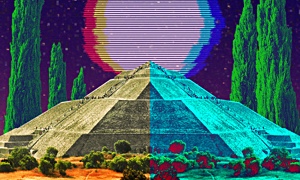Talk to most musicians, and they'll generally sound like they are caught amidst a whirlwind of activity. It takes a lot of hustling to make ends meet when you are musician, particularly a musician who plays jazz. So it is altogether appropriate that one of the running threads of the new HBO series 'Treme' is that the character of Antoine Batiste, played by Wendell Pierce, is looking for a gig, or is on the run to get to a gig, and he's always short of cab fare when he gets there. Assuming he holds his gig playing for strippers on Bourbon Street (in next week's column, I ask Trombone Shorty about the oft-spoken phrase “There's pride on Bourbon Street"), Batiste may get some steady cash in his pocket, but I wouldn't count on it.

'Treme' is a fictionalized account of life in post-Hurricane Katrina New Orleans for the city's inhabitants. While it weaves together story threads of musicians, a DJ, a chef, a lawyer, a college professor, a bar owner, a contractor and others, regardless of the character, you hear and often see the music of the city featured (go to the show's website and get a playlist for each show). In short, this is really the first time that television has dedicated some serious effort and creativity to jazz music since the Ken Burns 'Jazz' documentary that came out in 2001.
Of course, I'm curious to see how the show will be received, but I think it is off to an amazing start. This isn't surprising, considering the fact that show creator David Simon won plenty of hosannas for his work on 'The Wire,' and rightfully so. The five seasons of that show on HBO were brilliant, for me even surpassing 'The Sopranos' in quality, so I have high expectations as Simon and his crew uses a fictional conceit to faithfully delve into the life, culture and music of New Orleans.
The opening of the show's first episode will likely be a revelation for many, as the mighty Rebirth Brass Band get paid to do a second-line parade, stated in the show as the first post-Katrina parade to take place. Maybe I'm selling the average person short, but I just don't think most people know what a brass band does in New Orleans after playing 'When the Saints Go Marching In' for Mardi Gras -- the show even deals with this in the second episode, where two street musicians charge some tourists extra for playing it.
While music is used to make money for some of these characters, it's also abundantly clear that music is truly the fabric of the day-to-day life of its citizens. Here people take the time to follow a parading brass band as it strolls down the avenue playing its particular brand of jazz and funk that is the heartbeat of second line, which literally means the line of people after the musicians. Almost every scene that takes place in a car or home has classic New Orleans music playing in the background.
Trumpeter Kermit Ruffins makes many appearances in the show and gets some great lines of dialogue, as well. But there have been a multitude of great live performances from others. A couple of highlights from the second episode (which aired Sunday, April 18) stand out:
It was great to see the scene where Elvis Costello and New Orleans legend Allen Toussaint were in Piety Street Studio with the Crescent City Horns recording the horn track to 'Tears Tears and More Tears' from the duo's 2006's 'The River in Reverse.' Just seeing musicians doing their thing in the studio playing along to track and adding horns is not something you see every day.
The mix of humor and singular New Orleans art and culture comes through in the opening of the second episode when legendary street musician and voodoo enthusiast Coco Robicheaux plays 'Walking With the Spirit' on acoustic guitar and then does a ritual sacrifice of a chicken on-air at WWOZ, which is, in the real world, a great radio station in New Orleans. The flip side of this uniquely New Orleans flavor was the Jazz Vipers' downhearted version of 'I Hope You're Coming Back to New Orleans,' which was as beautiful, ragged and sad piece of music that I've ever heard.
But more than anything, the musical highlight for me was the closing scene of the second episode were Indian chief Albert Lambreaux, played wonderfully by Clark Peters, holds his first practice in the ravaged shell of a bar called Poke's Tavern. He's playing bass when one of his crew finally shows up. After setting down his bass and a few words of hello, Lambreaux breaks into a stunning call-and-response performance with his crew of one as the two of them dance and tap away on tambourines. There's no talk about what they were going to do, they just broke into 'Shallow Water' as the show comes to a close. It's a stark reminder that music may be one of the city's biggest exports, but here were two locals playing for themselves, using music to regain a sense of normality.
For more information contact All About Jazz @ Spinner.






















